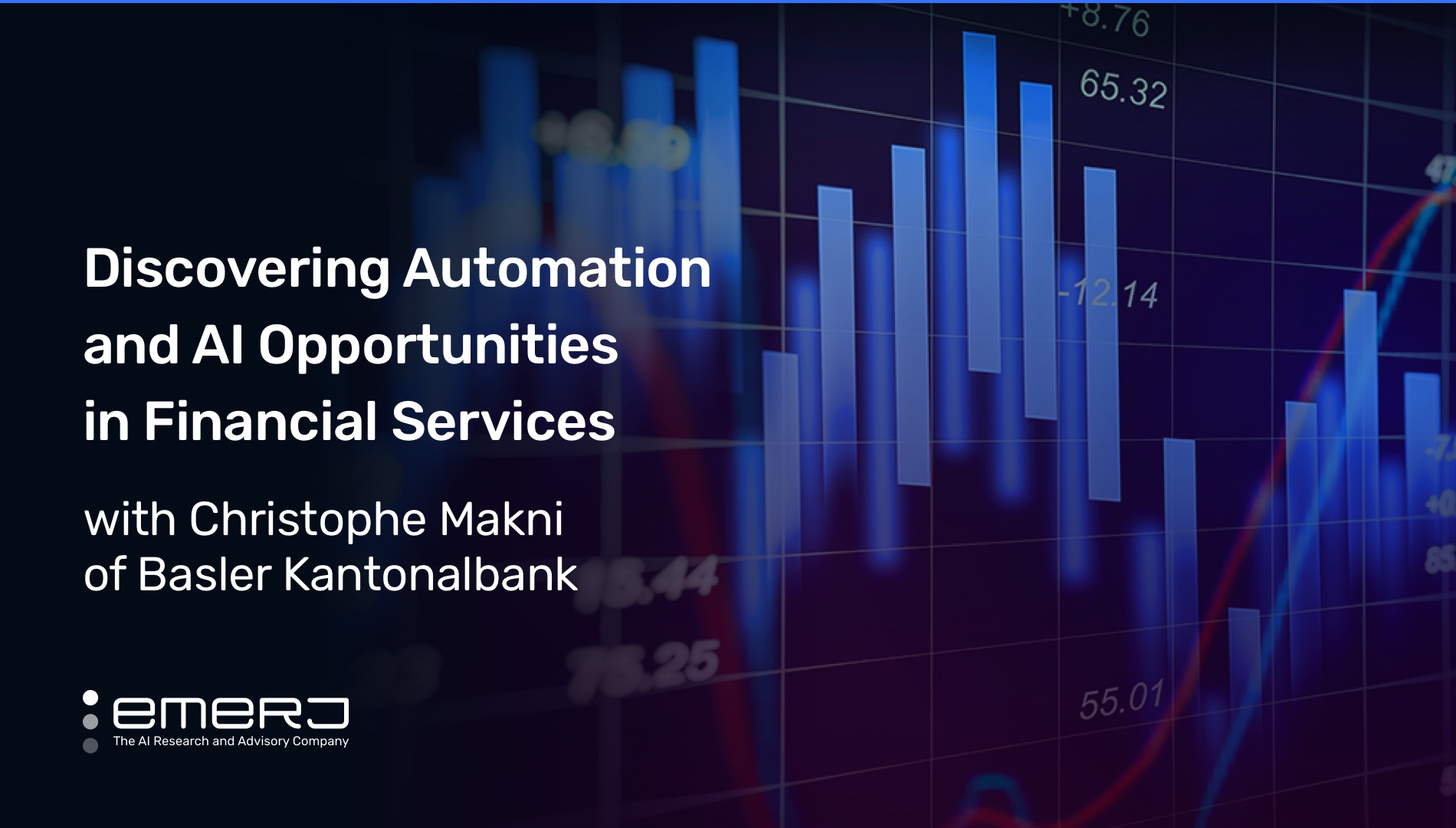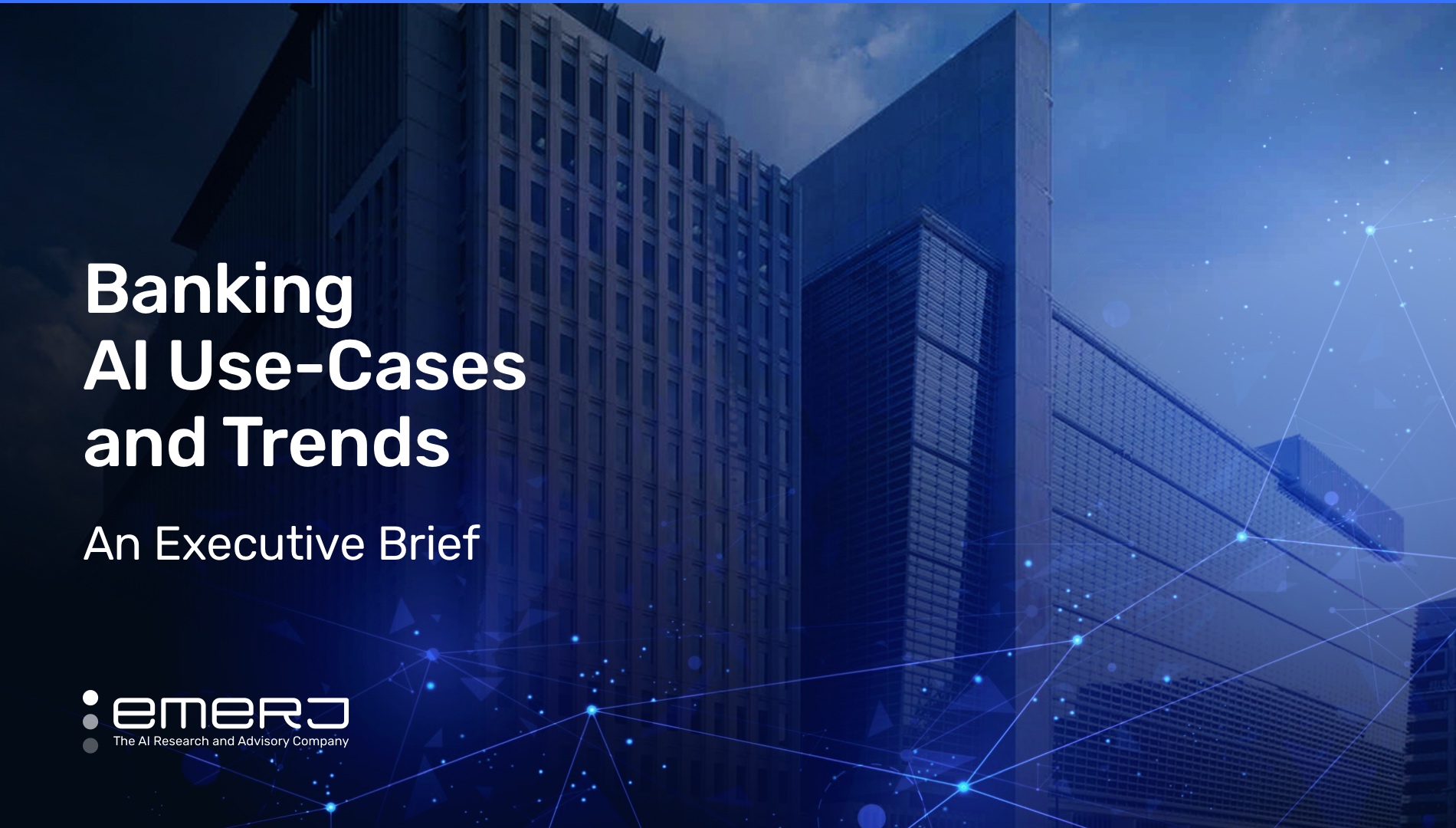Robotic Process Automation in Financial Services – Three Applications
Financial services is an industry rife with repetitive processes and workflows that do not ultimately require human judgment to complete. Nearly three out of five leading banks polled [pdf] in a survey from Arizant, American Banker, and robotic process automation (RPA) vendor UiPath reported that their organizations had already implemented “moderate or significant” automation technologies by March 2022 to accomplish these tasks at their organizations.
The principle difference between RPA and traditional automation in terminology is the presence of programmable software as the fulcrum of that automation, as opposed to more conventional mechanic-based machines.
This article will explain RPA’s general function in the financial services space in solving business problems surrounding the organization and modernization of legacy tech stacks. We will then explore three principal applications of RPA our research finds present in the financial services space:
- Document processing: Financial institutions (FIs) use RPA to process documents like invoices, mortgage contracts, and general ledgers into malleable data formats that can be most efficiently accessed over diverse data stacks.
- Data reconciliation and management: FIs also use RPA to manage and synthesize the data they already have in their systems and services at the heart of capabilities that streamline and enhance customer journeys in financial services.
- Compliance and fraud detection: RPA plays an enormous role in detecting behavior in financial records indicative of criminal activity, helping FIs stay compliant with relevant regulations or know their customers better for both ends.
First we will begin with a summarization of RPA’s essential, but not exclusive, function for most financial services organizations based on our research.
The Functionality of RPA in Financial Services
Another word for messy tech stacks gets called ‘the shoebox problem’. It could also be called the ‘closet problem.’ Essentially, you throw everything in your closet and never clean it. Most often, it is the best way noncoding professionals can best explain how they’ve treated their tech stack over the decades.
However, thinking of the shoebox problem in such a way ignores how tech stacks serve as public infrastructure for their organizations. A better way to think of the natural difficulties of legacy tech stacks shaped by decades of efficiency directives is by comparing them to large commuter rail stations.
Both need help to keep up with differentiating traffic and maintaining essential functions for new and old users with different ways of doing things. Both cannot just be idly scrapped and rebuilt from scratch without incredible investment and delay.
Thinking of tech stacks this way also helps noncoding professionals most easily conceptualize RPA’s broad application to financial services workflows as the rail infrastructure for that commuter rail around the tech stack. In other words, it’s often a technology that gets people and data around sprawling, essential data stacks with decades of input and updates.
While human beings ultimately decide what happens to that data and how it serves customers, RPA software deployed at medium and large enterprises tends to serve an essential role in navigating and sorting it. A two-minute video from Dave Hoffman, former board member at PwC, explains the technical reasons why that’s just the case:
Not An AI Capability But Often Inseparable from AI in Function
RPA is not technically an AI capability but often is considered adjacent and used in tandem with AI capabilities like machine learning. When RPA and AI capabilities are combined in workflows, the resulting technology is frequently referred to as “intelligent automation.
These often operate in a relationship where RPA technologies carry out data and other information-based task requests informed by the AI capabilities tracking deeper insights from the data RPA capabilities provide.
Another way of saying this might be thinking of RPA as the ‘hands’ and core AI capabilities like machine learning and neural networks as the ‘brain.’ The analogy becomes apparent from the following quote taken from UiPath AI Director Sunil Tahilramani’s recent appearance on the AI in Business podcast:
“So at the core of RPA is the skill capability of software robots that are capable of emulation and can do things like understand what’s on the screen, complete the right keystrokes, navigate between systems, identify and extract data. And they can do that across a wide range of different actions.
However, modern enterprises and even your day-to-day work is made up of more than simple processes and require rich and complex decision-making. And that’s where AI comes in automation, and AI is essentially complementary technology to handle this whole range of workflows. And a lot of people would like to conceptualize that RP is the hands-on AI is the brain, and when combined, there is no limit on what they can achieve from an automation and efficiency perspective.”
– Director of AI at UiPath, Sunil Tahilramani
The arrangement of these very different RPA and AI technologies underscores the necessity of their interconnectedness to perform the advanced tasks described in this article.
Thanks to that interdependence, credit for those capabilities is often given solely to AI in media and other academic reporting. From the higher view, it is also easier to see how these technologies are often confused, as different in nature and function as they are.
Yet for the same reasons, RPA is often a helpful way to introduce business leadership to AI-adjacent technologies, their limitations, and the ways they can realize data-driven business insights that human observation simply cannot on its own.
Document Processing
Among the most prominent applications of RPA in financial services is procuring and processing data from documents.
Particularly for older FIs, the application of technology for these ends tends to include the following areas in the following ways:
- The basis of report automation that often serves as an early AI beachhead in accounting departments for medium and large-sized enterprises.
- The RPA-based automation of documentation-heavy processes like mortgages and credit applications means further reshaping accounting departments in adjacent industries like real estate, credit, and lending.
These trends make sense given the traditional dependence of accounting departments and adjacent accounting-driven services on documentation, data, and multitudinous data stacks.
Preparing Accounting Departments for Early AI Beachheads
Whether in accounts payable or receivable, invoice processing itself is the most ubiquitous form of document processing across sectors. It has traditionally been handled by employees by hand, one document at a time.
Regarding RPA capabilities, invoice and other industry-specific document processing also provides an ample yet simple beachhead for vendors to ‘land and expand’ at an organization. Vendor solutions are the best way for smaller firms to wield the power of an enterprise-level accounting department in a way that meets their limited, but ostensibly growing, volume of business.
Whereas from the standpoint of early AI deployments for larger enterprises, invoice processing – and report automation overall – is an ample smaller project in the accounting department that can be the foundation of an organizational transformation through an early AI project.
Speaking on the AI in Financial Services podcast, Vic.ai CEO Alexander Hagerup tells Emerj that these processes are so susceptible to automation that the “autonomization” of invoices and other forms of documentation processing in financial services is something the sector should see in the near future.
Autonomy in document processing is possible, Hagerup specifies, for the same reason RPA technologies are so applicable to inherent workflows: because document processing is a rules-based system meant to inform human decision-making in business but does not involve the kinds of decisions that humans ultimately need to make.
“Where a rules-based automation system breaks down is because there’s so many nuances, there’s so much decision making that goes into accounting, but data extraction is separate from accounting. So I think that’s good to remember as well that just extracting data off a document is different from making an accounting decision for this specific company… [Those processes] differ from company to company. And there’s just too many variations in this for any rules-based technology to be able to reason about that and come up with a level of automation or autonomy, autonomy being more sophisticated on automating specific problems.”
– Vic.ai CEO Alexander Hagerup
Lending-Based Document Processing
Lending, especially in mortgages and real estate, is a popular sector of financial services for RPA applications. With lots of data, contracts, and documentation to spare – many processes therein from large financial institutions and down to individual agents are ripe for automation through software.
The circumstances lead to a robust sector for vendor activity, with many solutions being offered from highly customizable solutions – especially those targeted for individual use by financial planners and agents. Sometimes, larger firms can deploy RPA in-house as part of an early AI adoption project.
IBM Director of AI Platforms and Automation Merve Unuvar finds mortgages, in particular, represent the kind of goal-focused banking processes that comprise reliable applications of robotic process automation in financial services.
While invoice and other document processing is often the gateway to RPA’s use in lending, financial services firms soon find the more robust application of the technology: being able to trace results with insights based on developed business goals.
During a recent appearance on Emerj’s AI in Business podcast, Unuvar discusses how measuring goals in-depth – which adds tremendous value to the mortgage process for lenders – tends to be a feature of tasks where RPA has direct applicability:
“If you think through the same mortgage scenario: is the goal to sell more loans, or is it to process loans faster? It can be a combination of these metrics, but we need to really define the key performance indicator or the goal of these workflows and then start monitoring the performance towards these goals. And one of the very obvious ways to find the pockets of automation is then to find the bottleneck tasks in these workflows that will impact this goal.”
– IBM Director of AI Platforms and Automation, Merve Unuvar
Data Reconciliation and Management
Even as part of serving as the ‘tech stack commuter rail,’ for financial services organizations, RPA ends up being responsible for so much more than much of the ‘transport’ of that data in and out of the tech stack. It also has a broad application in being able to autotomize – as in, process without any human input – financial services workflows that help maintain and organize those stacks.
Playing the role of commuter rail for information around the tech stack also places RPA programs at the heart of processes at larger financial institutions from opening and closing individual customer accounts to the broad range of business reporting to help financial services leaders steer the ships of their respective organizations.
In terms of the former, RPA can play an even more prominent role in curating nearly all aspects of customer journeys once integrated at the level of accounts management as a gateway technology. Among the most prominent use cases in this example, we see this in collecting and organizing data from call centers and other extant nexuses of customer experience activity.
To return to the ‘hands’ and ‘brain’ analogy of RPA’s relationship to AI capabilities deployed in legacy firms and their tech stacks: Many of the specific capabilities that enhance customer journeys along with their relevant pipelines and workflows are actually AI-based. In other words, the principal difference informs a kind of funnel typical of financial services firms and how they use RPA and AI in concert:
- RPA makes it possible to track information from large, complex tech stacks.
- AI capabilities take that data, examining for deeper insights and informing data-driven decision-making from leadership.
- Many of those decisions made are carried out in processes that involve RPA or human input.
As an example in customer journey development:
- While a banking customer is on a call, RPA-based software and processes can immediately bring up their entire financial history for a human call agent.
- The bank systems can advise the call agent on highly customized offers to that customer’s particular financial needs and situation. The customization of that offer has likely been informed by AI-driven insights from the call center data collected by RPA-driven internal processes, human agents, and usually a conversational AI.
The bottom line of these bullet points: RPA drives data transmission between organizations, employees, customer information, and tech stacks – whereas AI capabilities are usually deployed to examine that data for broader business and organizational insights.
The following serves as a compelling and summarizing example of hyper-enhanced customer experiences resulting in transformations driven by RPA technologies.
During his appearance on Emerj’s ‘AI in Business’ podcast, Tom Harrington – then-Director of Insurance at Pegasystems, now at Shift Technology – discussed the level of customer journey customization being made possible through RPA and AI-driven transformations in financial services:
“It’s something we would call a ‘micro journey.’ But think about renewal retention in the insurance space, where you have a very compelling opportunity to actually retain a customer that has already been booked with you for a while. And even an opportunity to expand on top of that is, as you look at the application of AI, and where that can fit in that type of engagement, that type of interaction that you might choose to have with a policyholder.”
– Head of Insurance at Pegasystems, Tom Harrington
For a more specific image of how AI-informed and RPA-driven customer journeys can cross over between both a customer’s online and call center experience, Tom brings up an insurance-based example where a customer can call the call center to an agent that can immediately “be able to see what’s actually happening immediately before [the customer] even called about the problem.”
Compliance and Fraud Detection
As we’ve covered in other articles about compliance and fraud detection, the workflows therein are often deeply siloed and repetitive – thus ample for broader RPA and even intelligent automation applications.
Part of the reason why is that both descend from the Banking Security Act of 1970 (BSA), which created a rather regimented interpretation of data especially applicable to the rules-based systems that RPA (and machine learning among AI capabilities) excels at streamlining.
Often, these capabilities are discussed and marketed under the umbrella of AML and KYC compliance (short for ‘anti-money laundering’ and ‘know your customer’). Ultimately, their overlap in banking compliance extends from the parameters and legal definitions given in the original BSA.
Further, the rigidity of the rules under the BSA means that deviations in behavior indicative of noncompliance can be easily detectable from the automatic reading of a transactions ledger. RPA is much more efficient at this task than human beings and, therefore, can more quickly detect the kinds of behavior usually indicative of fraud.
To differentiate RPA applications from AI capabilities in the BSA compliance and fraud detection context:
- RPA technologies automatically read online and electronic arenas of customer behavior, like transaction ledgers.
- AI capabilities analyze the sensory and other tracking data from these interactions and judge their proximity to human-defined behaviors and trends in fraud.
–







